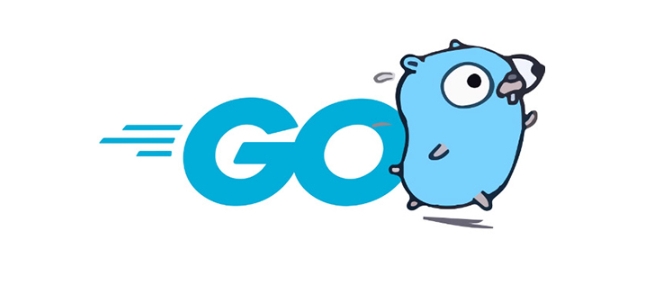Building and Deploying Go Applications with Docker
Jul 25, 2025 am 04:33 AMUse multi-stage Docker builds to create small, secure images by compiling the Go binary in a builder stage and copying it to a minimal runtime image like Alpine Linux, reducing size and attack surface. 2. Optimize build performance by copying go.mod and go.sum first to leverage Docker layer caching, ensuring dependencies are only re-downloaded when necessary. 3. Build the Go binary with production flags including CGO_ENABLED=0 for static compilation, GOOS=linux for Linux compatibility, and -ldflags="-s -w" to strip debug symbols and reduce binary size. 4. Run the container as a non-root user by creating a dedicated user in the Docker image to minimize security risks. 5. Deploy using Docker Compose for development or testing, and use container registries with orchestration platforms like Kubernetes or ECS for production, ensuring consistent deployment across environments. Additionally, use a .dockerignore file to exclude unnecessary files such as test assets and documentation, keeping the build context minimal and improving build efficiency.

Building and deploying Go applications with Docker is a powerful way to ensure consistency across environments, reduce deployment friction, and simplify dependency management. Go’s statically compiled binaries pair exceptionally well with Docker’s lightweight container model. Here’s how to do it effectively.

1. Use Multi-Stage Builds for Smaller, Secure Images
One of the best practices when Dockerizing Go apps is using multi-stage builds. This lets you compile your Go binary in one stage (with the full Go SDK) and then copy only the final binary into a minimal runtime image.
# Stage 1: Build the Go binary FROM golang:1.22 AS builder WORKDIR /app # Copy go mod files and download dependencies COPY go.mod go.sum ./ RUN go mod download # Copy source code COPY . . # Build the binary (disable CGO for full static compilation) RUN CGO_ENABLED=0 GOOS=linux go build -a -installsuffix cgo -o main ./cmd/api # Stage 2: Minimal runtime image FROM alpine:latest RUN apk --no-cache add ca-certificates WORKDIR /root/ # Copy the binary from builder stage COPY --from=builder /app/main . # Expose port and define command EXPOSE 8080 CMD ["./main"]
Why this matters:

- The final image is tiny (often under 30MB).
- No Go toolchain or source code is included in production.
- Reduces attack surface and improves startup time.
2. Optimize Build Context and Layer Caching
Docker builds are faster when you structure your COPY instructions to take advantage of layer caching.
- Copy
go.modandgo.sumfirst, then rungo mod download. This means Docker will reuse the downloaded modules unless those files change. - Copy source code afterward so code changes don’t invalidate dependency layers.
COPY go.mod go.sum ./ RUN go mod download COPY . .
This small optimization saves significant time during CI/CD and local rebuilds.

3. Build for Production with Proper Flags
When building your Go binary for Docker, use flags that optimize for production:
go build -ldflags="-s -w" -o main ./cmd/api
-ldflags="-s -w"strips debug symbols, reducing binary size.CGO_ENABLED=0ensures a fully static binary (no external dependencies onlibc, etc.).GOOS=linuxensures the binary is built for Linux (required inside Docker).
Update your Dockerfile accordingly:
RUN CGO_ENABLED=0 GOOS=linux go build -a -installsuffix cgo -ldflags="-s -w" -o main ./cmd/api
4. Run as Non-Root User for Security
Running containers as root is a security risk. Create a non-root user in your final image:
FROM alpine:latest RUN apk --no-cache add ca-certificates RUN adduser -D -s /bin/sh appuser WORKDIR /home/appuser COPY --from=builder /app/main . RUN chown -R appuser:appuser ./ USER appuser EXPOSE 8080 CMD ["./main"]
This ensures your app runs with minimal privileges.
5. Deploy with Docker Compose or Orchestration Tools
For local development or simple deployments, use docker-compose.yml:
version: '3.8'
services:
api:
build: .
ports:
- "8080:8080"
environment:
- ENV=production
restart: unless-stoppedFor production:
- Push the image to a registry (
docker push myregistry/myapp:latest) - Deploy using Kubernetes, ECS, or any container orchestration platform.
Example push and run:
docker build -t myapp:latest . docker tag myapp:latest myregistry/myapp:latest docker push myregistry/myapp:latest # Run locally docker run -p 8080:8080 myregistry/myapp:latest
Bonus: Leverage .dockerignore
Just like .gitignore, use .dockerignore to exclude unnecessary files from the build context:
.git .gitignore README.md Dockerfile .dockerignore *.md go.mod go.sum
Wait — don’t ignore go.mod and go.sum if you’re copying them in the Dockerfile. Instead, exclude dev-only assets:
.git .gitignore README.md *.test *.sh cmd/**/testdata
This keeps the build context small and speeds up builds.
Basically, combining Go’s simplicity with Docker’s portability gives you fast, secure, and consistent deployments. With multi-stage builds, proper user permissions, and smart layering, your Go services will be production-ready in no time.
The above is the detailed content of Building and Deploying Go Applications with Docker. For more information, please follow other related articles on the PHP Chinese website!

Hot AI Tools

Undress AI Tool
Undress images for free

Undresser.AI Undress
AI-powered app for creating realistic nude photos

AI Clothes Remover
Online AI tool for removing clothes from photos.

Clothoff.io
AI clothes remover

Video Face Swap
Swap faces in any video effortlessly with our completely free AI face swap tool!

Hot Article

Hot Tools

Notepad++7.3.1
Easy-to-use and free code editor

SublimeText3 Chinese version
Chinese version, very easy to use

Zend Studio 13.0.1
Powerful PHP integrated development environment

Dreamweaver CS6
Visual web development tools

SublimeText3 Mac version
God-level code editing software (SublimeText3)

Hot Topics
 How does the switch statement work in Go?
Jul 30, 2025 am 05:11 AM
How does the switch statement work in Go?
Jul 30, 2025 am 05:11 AM
Go's switch statement will not be executed throughout the process by default and will automatically exit after matching the first condition. 1. Switch starts with a keyword and can carry one or no value; 2. Case matches from top to bottom in order, only the first match is run; 3. Multiple conditions can be listed by commas to match the same case; 4. There is no need to manually add break, but can be forced through; 5.default is used for unmatched cases, usually placed at the end.
 Using the Context Package in Go for Cancellation and Timeouts
Jul 29, 2025 am 04:08 AM
Using the Context Package in Go for Cancellation and Timeouts
Jul 29, 2025 am 04:08 AM
Usecontexttopropagatecancellationanddeadlinesacrossgoroutines,enablingcooperativecancellationinHTTPservers,backgroundtasks,andchainedcalls.2.Withcontext.WithCancel(),createacancellablecontextandcallcancel()tosignaltermination,alwaysdeferringcancel()t
 Building Performant Go Clients for Third-Party APIs
Jul 30, 2025 am 01:09 AM
Building Performant Go Clients for Third-Party APIs
Jul 30, 2025 am 01:09 AM
Use a dedicated and reasonably configured HTTP client to set timeout and connection pools to improve performance and resource utilization; 2. Implement a retry mechanism with exponential backoff and jitter, only retry for 5xx, network errors and 429 status codes, and comply with Retry-After headers; 3. Use caches for static data such as user information (such as sync.Map or Redis), set reasonable TTL to avoid repeated requests; 4. Use semaphore or rate.Limiter to limit concurrency and request rates to prevent current limit or blocking; 5. Encapsulate the API as an interface to facilitate testing, mocking, and adding logs, tracking and other middleware; 6. Monitor request duration, error rate, status code and retry times through structured logs and indicators, combined with Op
 how to properly copy a slice in go
Jul 30, 2025 am 01:28 AM
how to properly copy a slice in go
Jul 30, 2025 am 01:28 AM
To correctly copy slices in Go, you must create a new underlying array instead of directly assigning values; 1. Use make and copy functions: dst:=make([]T,len(src));copy(dst,src); 2. Use append and nil slices: dst:=append([]T(nil),src...); both methods can realize element-level copying, avoid sharing the underlying array, and ensure that modifications do not affect each other. Direct assignment of dst=src will cause both to refer to the same array and are not real copying.
 Working with Time and Dates in Go
Jul 30, 2025 am 02:51 AM
Working with Time and Dates in Go
Jul 30, 2025 am 02:51 AM
Go uses time.Time structure to process dates and times, 1. Format and parse the reference time "2006-01-0215:04:05" corresponding to "MonJan215:04:05MST2006", 2. Use time.Date(year, month, day, hour, min, sec, nsec, loc) to create the date and specify the time zone such as time.UTC, 3. Time zone processing uses time.LoadLocation to load the position and use time.ParseInLocation to parse the time with time zone, 4. Time operation uses Add, AddDate and Sub methods to add and subtract and calculate the interval.
 How to use template.ParseFS with go embed?
Jul 30, 2025 am 12:35 AM
How to use template.ParseFS with go embed?
Jul 30, 2025 am 12:35 AM
Use the template.ParseFS and embed package to compile HTML templates into binary files. 1. Import the embed package and embed the template file into the embed.FS variable with //go:embedtemplates/.html; 2. Call template.Must(template.ParseFS(templateFS,"templates/.html")))) to parse all matching template files; 3. Render the specified in the HTTP processor through tmpl.ExecuteTemplate(w,"home.html", nil)
 How to use Docker with VS Code?
Jul 30, 2025 am 02:29 AM
How to use Docker with VS Code?
Jul 30, 2025 am 02:29 AM
InstallDockerDesktop,VSCode,andtheofficialDockerextensionfromMicrosoft.2.CreateaDockerfileinyourprojectroot,suchasusingnode:18-alpineforNode.jsappswithproperCOPY,RUN,andCMDinstructions.3.UsetheDockerextensionpaneltobuildtheimage,thenrunitasacontainer
 How to import a local package in Go?
Jul 30, 2025 am 04:47 AM
How to import a local package in Go?
Jul 30, 2025 am 04:47 AM
To import local packages correctly, you need to use the Go module and follow the principle of matching directory structure with import paths. 1. Use gomodinit to initialize the module, such as gomodinitexample.com/myproject; 2. Place the local package in a subdirectory, such as mypkg/utils.go, and the package is declared as packagemypkg; 3. Import it in main.go through the full module path, such as import "example.com/myproject/mypkg"; 4. Avoid relative import, path mismatch or naming conflicts; 5. Use replace directive for packages outside the module. Just make sure the module is initialized






